A twelve-image series, taken two days ago.
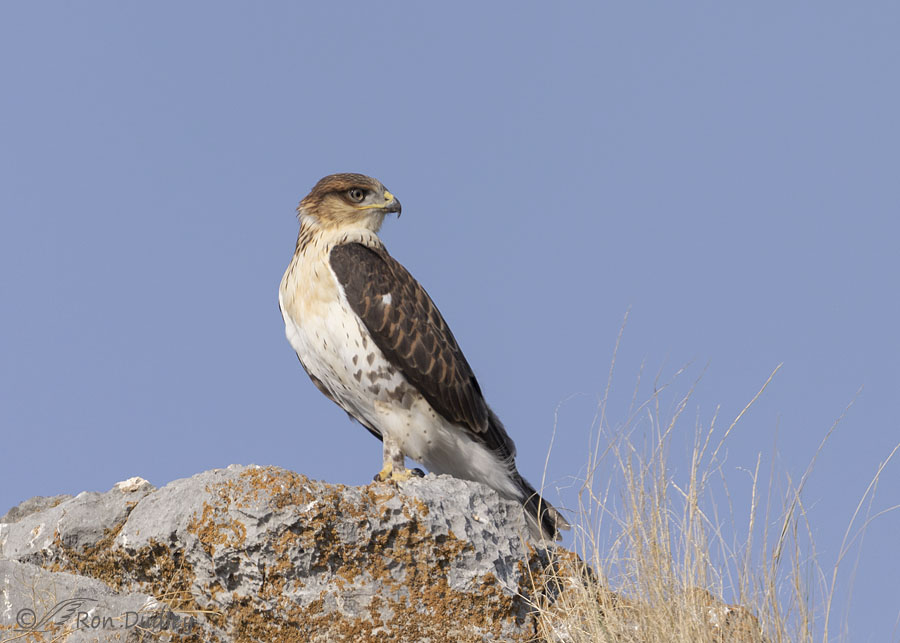
1/3200, f/6.3, ISO 500, Canon R5, Canon EF500mm f/4L IS II USM + 1.4 tc, not baited, set up or called in
It’s been a very long time since I’ve even seen a Ferruginous Hawk, much less photographed one, so two days ago I was tickled red (I don’t do pink, not even for a Ferrug) when I spotted this immature bird hunting from atop a rocky outcrop in the desert. I didn’t find ‘her’ until nearly 9 AM and by then the light was already beginning to get a little harsh in that landscape. I wasn’t particularly close to her either, but I could tell she was hunting so I hoped for flight and takeoff shots when she launched after prey.
She cooperated twice when she took off after prey in a good direction for photos. I screwed one of those opportunities up because I’d momentarily glanced away from my viewfinder when she took off, but I did pretty well the other time. These are those photos.
In this shot she’s scanning for prey in the flats on the other side of the road I was on. A moment after it was taken she spotted something in that direction and took off after it. This photo, and the following nine, are sequential shots in a burst without any skips. After that there are skips.
The photos mostly speak for themselves so I’ll keep my narration to a bare minimum.
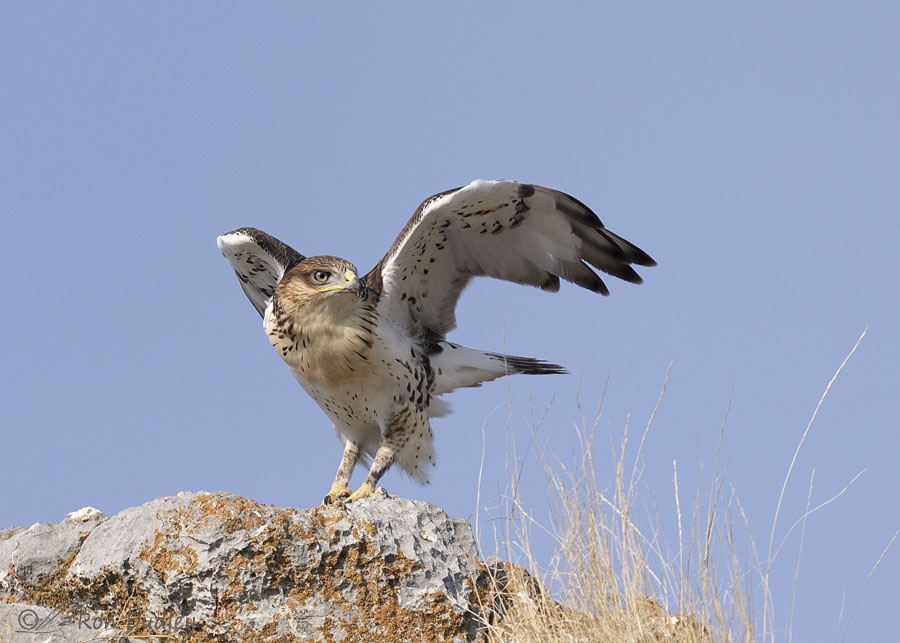
1/3200, f/6.3, ISO 500, Canon R5, Canon EF500mm f/4L IS II USM + 1.4 tc, not baited, set up or called in
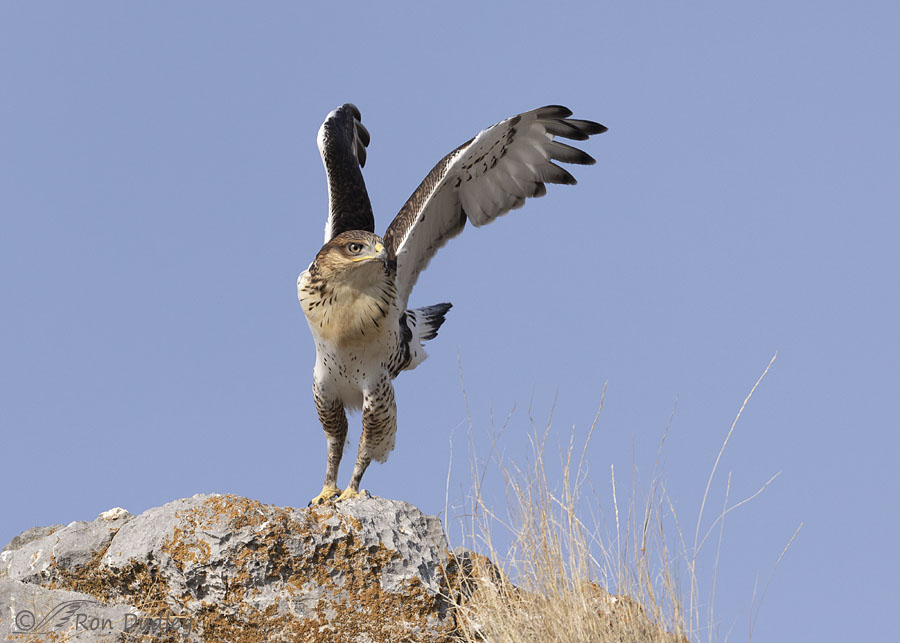
1/3200, f/6.3, ISO 500, Canon R5, Canon EF500mm f/4L IS II USM + 1.4 tc, not baited, set up or called in
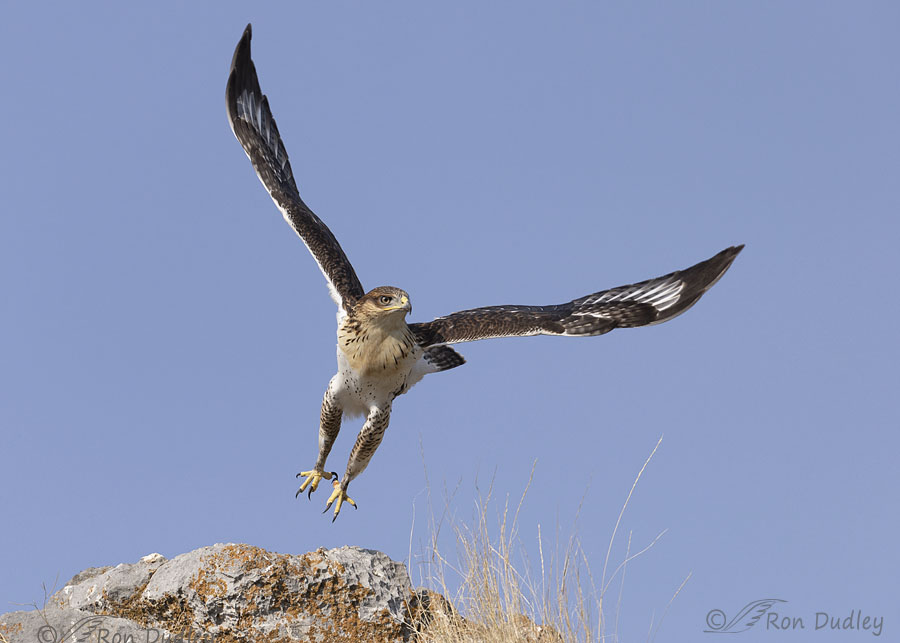
1/4000, f/6.3, ISO 500, Canon R5, Canon EF500mm f/4L IS II USM + 1.4 tc, not baited, set up or called in
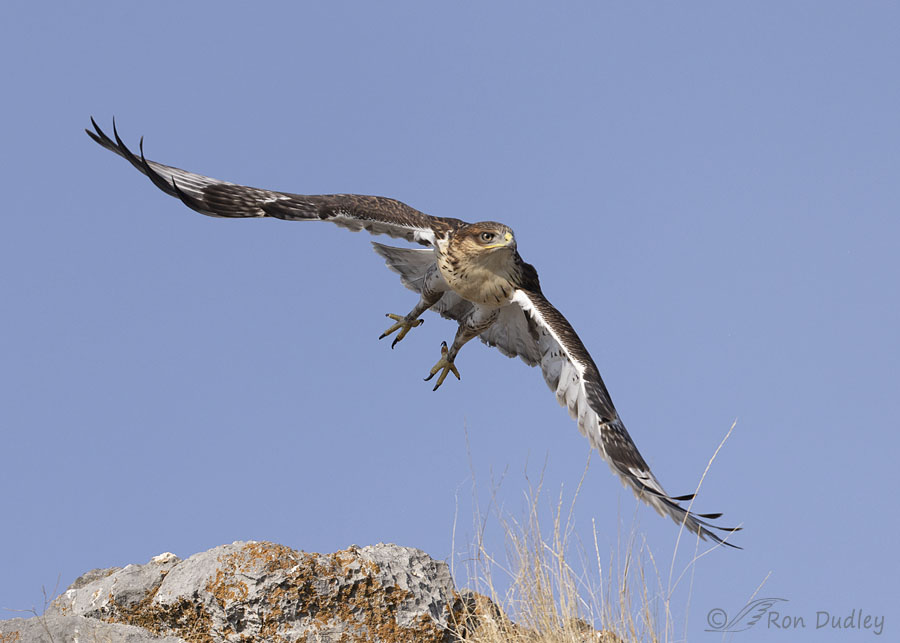
1/4000, f/6.3, ISO 500, Canon R5, Canon EF500mm f/4L IS II USM + 1.4 tc, not baited, set up or called in
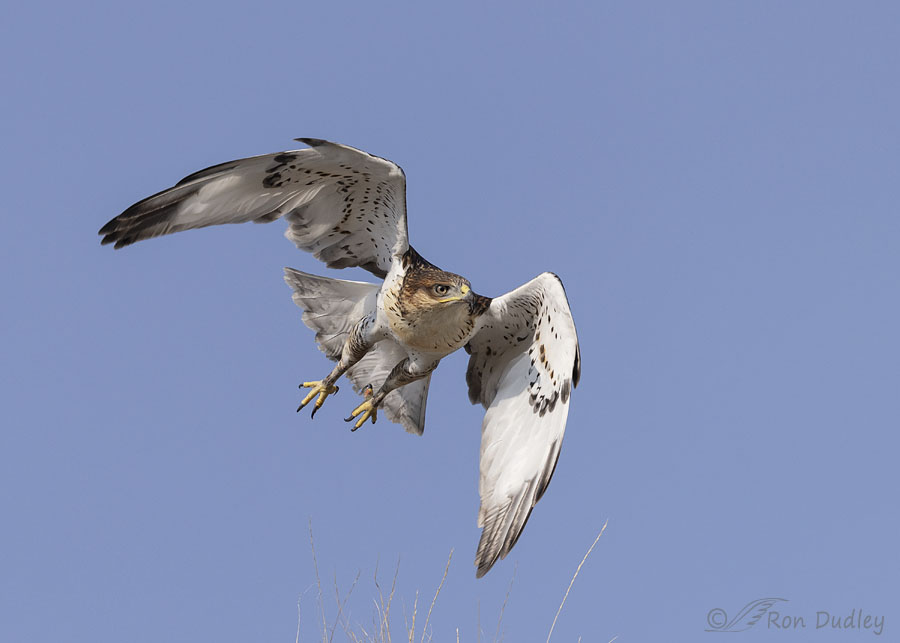
1/4000, f/6.3, ISO 500, Canon R5, Canon EF500mm f/4L IS II USM + 1.4 tc, not baited, set up or called in
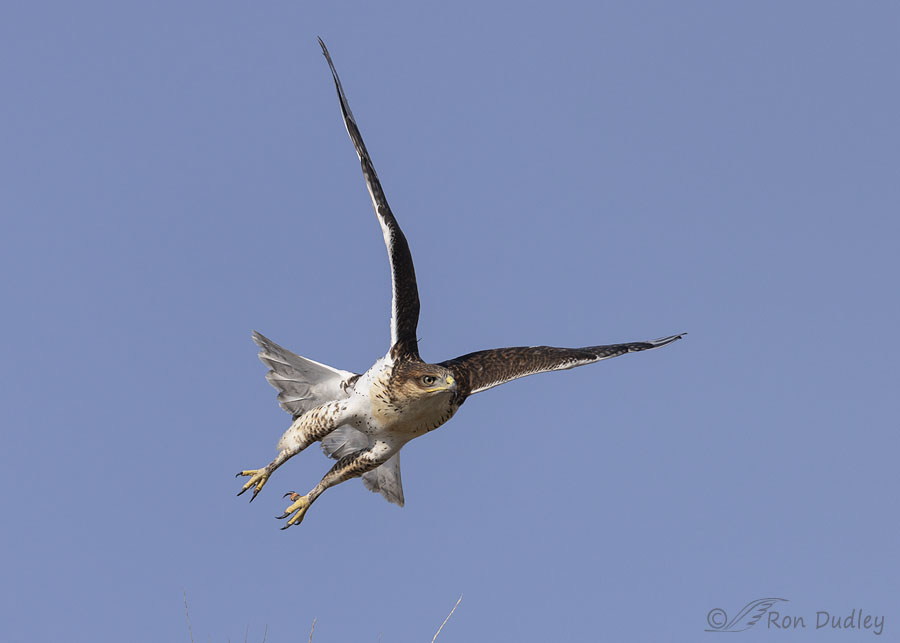
1/4000, f/6.3, ISO 500, Canon R5, Canon EF500mm f/4L IS II USM + 1.4 tc, not baited, set up or called in
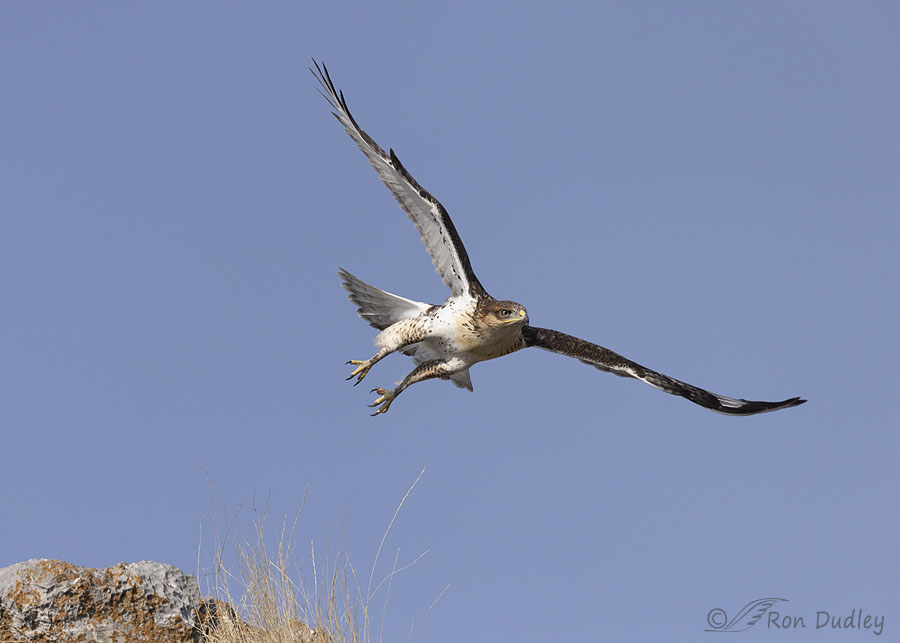
1/4000, f/6.3, ISO 500, Canon R5, Canon EF500mm f/4L IS II USM + 1.4 tc, not baited, set up or called in
I’ve cropped this shot looser to include the perch she took off from, for the perspective it provides.
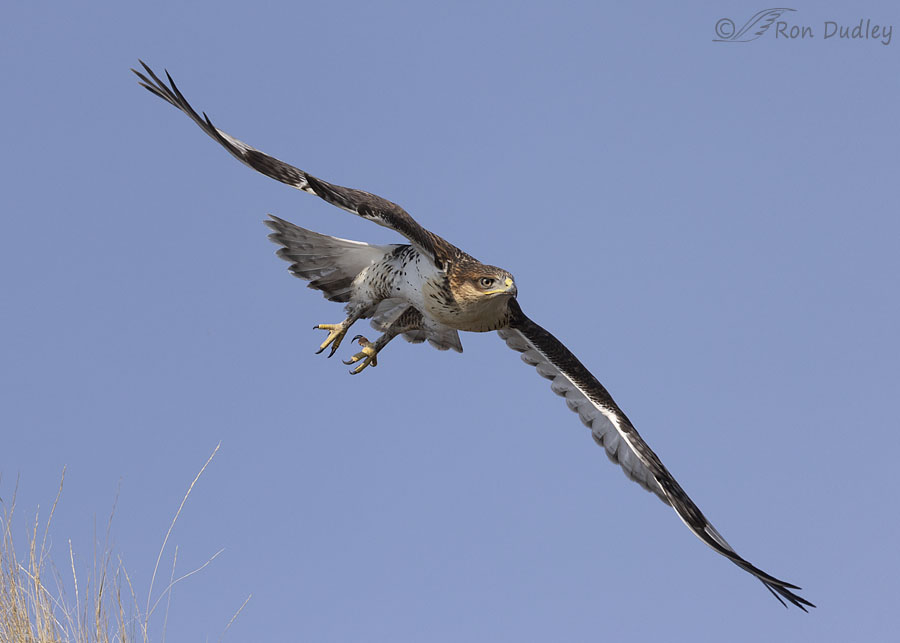
1/4000, f/6.3, ISO 500, Canon R5, Canon EF500mm f/4L IS II USM + 1.4 tc, not baited, set up or called in
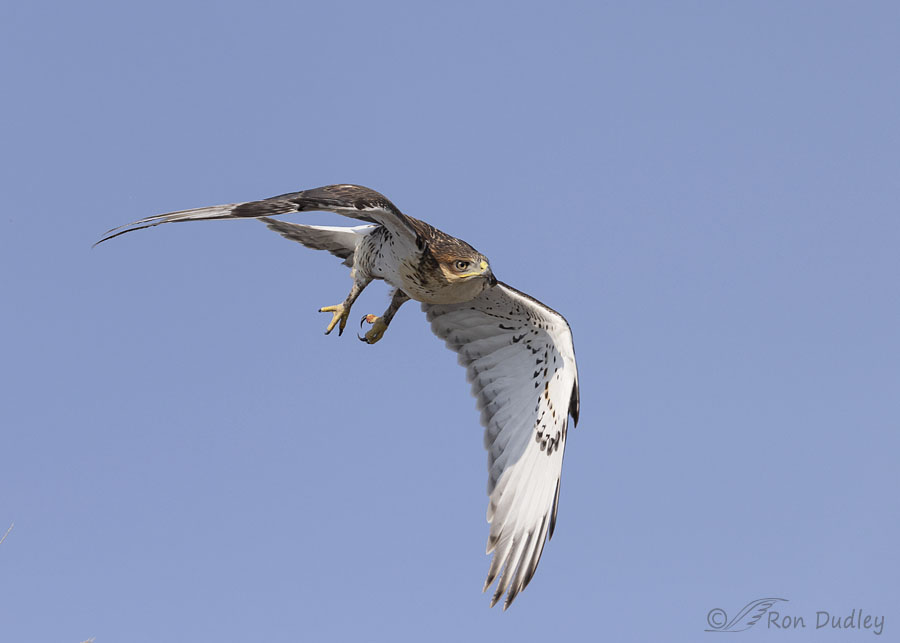
1/4000, f/6.3, ISO 500, Canon R5, Canon EF500mm f/4L IS II USM + 1.4 tc, not baited, set up or called in
After this shot I took nine photos of her where she was too close to the right frame edge, or I clipped body parts, so I haven’t included any of them.
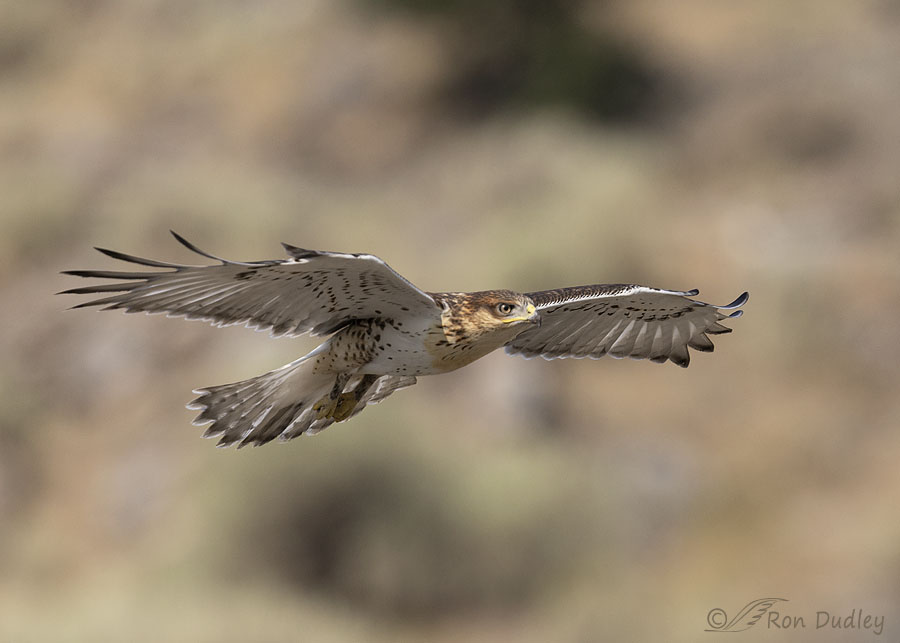
1/3200, f/6.3, ISO 500, Canon R5, Canon EF500mm f/4L IS II USM + 1.4 tc, not baited, set up or called in
I got her in frame for one more reasonably sharp photo while there was a hill in the background and not long before she passed in front of my pickup. Notice that she’s already beginning to flare as she descends and slows down as she gets closer to the potential prey.
Whatever she was after, probably a vole, she missed it so she came back to the same rocky outcrop to try again. I didn’t get any photos of her returning to her hunting perch, either because my windshield was in the way or because…well, I just botched them.
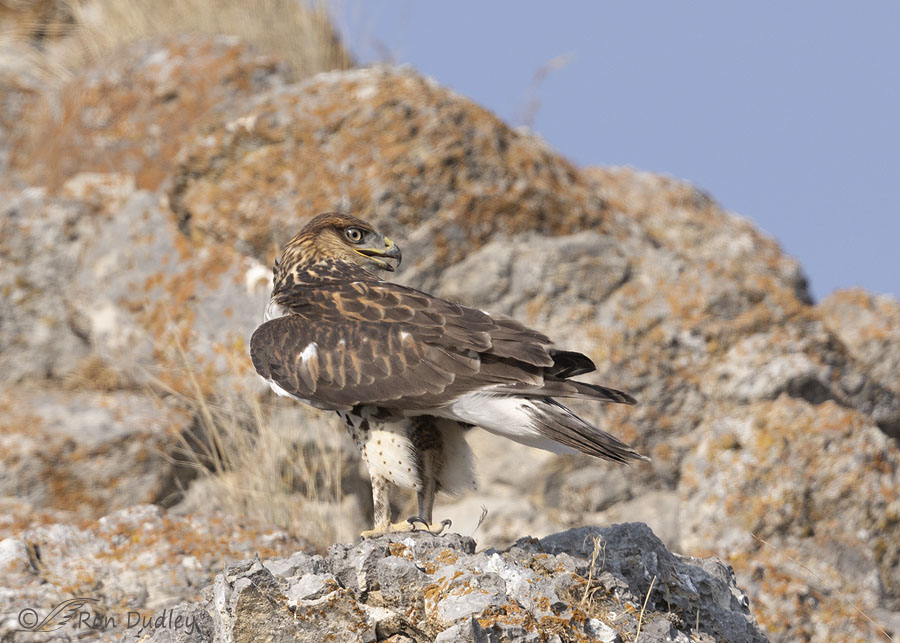
1/3200, f/6.3, ISO 500, Canon R5, Canon EF500mm f/4L IS II USM + 1.4 tc, not baited, set up or called in
This is the first sharp shot I got after she landed on the rocky outcrop again. This time she landed lower on it – her previous perch is just out of frame at upper left. In this photo she seems to be looking in frustration back at the spot where she’d missed the presumed vole.
Not long after I took this series of photos I left her and headed for home. In some ways it’s hard for me to imagine leaving a cooperative Ferruginous Hawk but the light was beginning to get harsh and with the sun higher in the sky it was becoming more difficult to get light in her eye.so I decided it was time.
I hope she eventually caught that vole. Or one of its buddies.
Ron


These are ALL wonderful!
My favorite is the second one, although I wouldn’t be able to pinpoint why.
Just adding my kudos!! Wonderful series…beautiful bird.
Thanks so much!!
The unwavering stare and immobile position of the head – while all those other parts are in motion – just amazing!
Yes, they’re pretty good at that, Carolyn.
Immature she might be, but she knows what she has to do. And does so in incredibly beautiful style.
And I smiled as I read the comments, noticing other people appreciating her britches/pantaloons – which you know caught my eye too.
Yup, I knew they would EC.
Great find and series of photos, she is a pretty bird. Seems her back is in the darker range of coloration but her undersides a nice white. Haley’s favorite bird, in rehab we call them ferrgies.
Thanks, April. When I think of Fergie I think of the former wife of disgraced Prince Andrew.
Awwwwwwesome! No overstating it, these are incredible shots of one incredible-looking raptor. Hard to pick a fav and glad I don’t have to, but the pantaloon and wings-up views of 3 and 4 are right up there. And the first and last, just for a look at all her fine features at rest. 😎
Much appreciated, Chris.
Pantaloons plus (with credit to whoever first commented with that term). Wings from so many perspectives. Gotta wonder what that red spot on the right hallux is. Evidence of a previous meal? We don’t have them here, but they’re apparently a rare sighting anywhere, so extra kudos for capturing these beautiful photos, Ron.
“with credit to whoever first commented with that term”
That would have been Elephant’s Child, Lyle. Years ago.
That red spot is most likely vole blood.
Spectacular series Ron! Thanks for sharing!
Charlotte Norton
Thanks, Charlotte.
So much for the bird doldrums! What a magnificent raptor! Your reward for a lot of time in the field.
“So much for the bird doldrums!”
John, I had that exact thought on the way home that morning.
That wingspread ! Those powerful legs and feet ! MAGNIFICENT !!
Thanks, Kris.
Fabulous!!!
Thanks, Kathleen.
My first reaction is “Outstanding” !!!!! Could also toss in exceptional. Love this series and that look of determined concentration in her eye. Perfect photos in every way – color, catch eye, action, etc. Very difficult to say what shot is my favorite, but will go with 4,5, and 9. Michael’s stunning is not an exaggeration.
Thanks very much, Everett.
What a glorious sequence, Ron. It almost feels like I was right there watching the mechanics of lift and flight in action.
“It almost feels like I was right there watching the mechanics of lift and flight in action.”
I’m glad you look at it that way, Granny Pat. I suspect some folks think I overdo it, posting this many photos. But I think it’s almost like watching a ‘flip book’, or even a video of the mechanics of takeoff and flight – especially when there aren’t any skips. So that’s why I do it.
A flip book? Yes, that is exactly the image I had in my head.
Wow! What a gorgeous sequence, Ron!
Thank you, Sheila.
WOW! Wonderful series, Ron…… 🙂 They’ll “take advantage” of a moment’s inattention every time! 😉
The 4th shot REALLY shows the wing spread and powerful legs….
Heat becomming oppressive to me at present……birds also – many different birds skimming the creek with their breasts to cool them or young perhaps?
“They’ll “take advantage” of a moment’s inattention every time”
That is the absolute truth, Judy!
Once again, you have captured a stunning study series of photos that give a peek into the world of hawks. That intense focus in the hawk’s eyes!
And once again I look at these and wonder how you manage to maneuver that not so small camera rig from inside a pickup truck to capture these shots.
How you aim and hold it steady eludes me.
“How you aim and hold it steady eludes me”
Michael, that’s where the pool noodle I use as a lens rest comes in. I love that thing. It keeps my lens quite stable as I rotate it on the noodle. The noodle is loose on the window so it also slides on the window as I’m following a bird mostly horizontally.
The other part of the equation is the fast shutter speeds I use. Some bird photographers scoff at me for those fast shutter speeds because they sometimes require fairly high ISO’s to get them, resulting in a little more noise. But that’s a potential tradeoff I’m more than happy to make.
So the lesson here is you got to ‘use your noodle’!
Joking aside, thanks for the reply. These ‘pro tips’ are much appreciated.